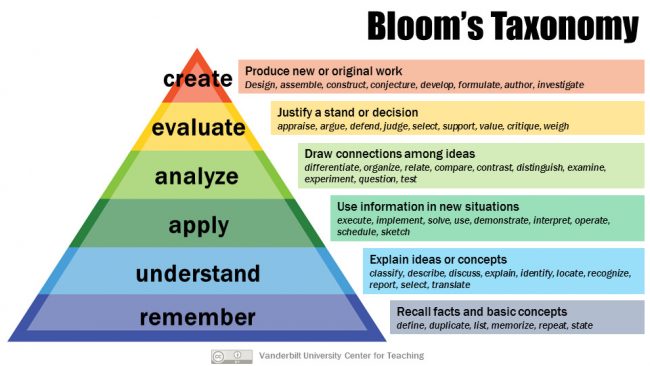In one sentence, Bloom's Taxonomy is a classification of cognitive skills that help teachers to design and conduct the teaching/learning process. It was design by Benjamin Bloom and terminated in 1956 and its principal objective is lead students to achieve new skills and knowledge.
Constructed with the purpose of assuring a significative learning, it consists in a range of levels which are: remember, understand, apply, analyse, evaluate and create. In fact, any methodology which is based in Bloom's Taxonomy pretends for the students to develop cognitive skills that allows them to use the knowledge they acquire as a tool in the resolution of any future problem. Therefore this is an essential and useful tool for teachers all around as it can be applied to almost anything because it simply provides an order for cognitive behaviour.
Bloom's Taxonomy will be our index in the design and construction of the CLIL sequence which shall be planned according to this cognitive sequence. Every activity will force us to select suitable verbs that match our objectives in order to achieve a specific purpose. In consequence it is entirely in our hands to identify the cognitive actions that students will apply in every task and collect them properly adapting our programming to benefit its acquisition.

No comments:
Post a Comment